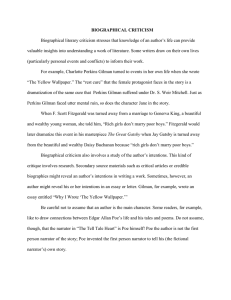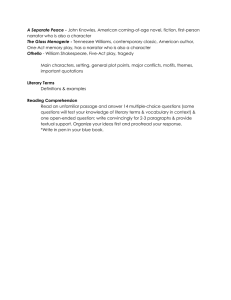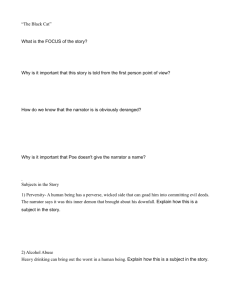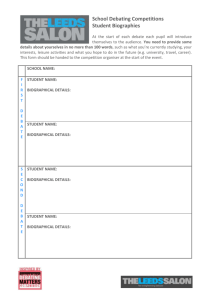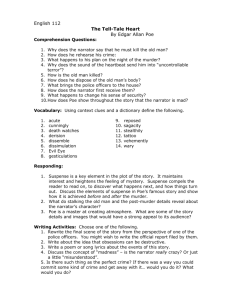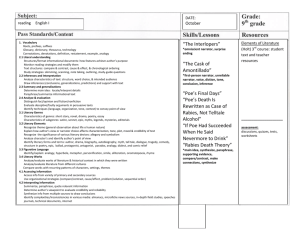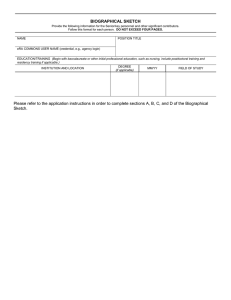BIOGRAPHICAL CRITICISM.1.2327.doc
advertisement
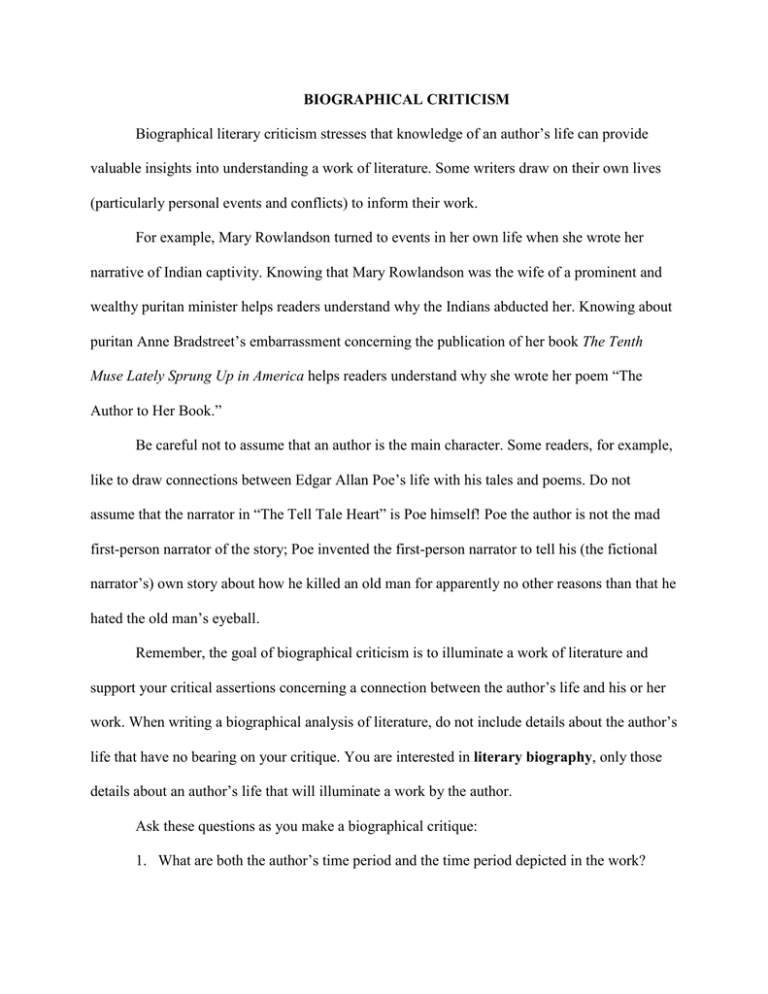
BIOGRAPHICAL CRITICISM Biographical literary criticism stresses that knowledge of an author’s life can provide valuable insights into understanding a work of literature. Some writers draw on their own lives (particularly personal events and conflicts) to inform their work. For example, Mary Rowlandson turned to events in her own life when she wrote her narrative of Indian captivity. Knowing that Mary Rowlandson was the wife of a prominent and wealthy puritan minister helps readers understand why the Indians abducted her. Knowing about puritan Anne Bradstreet’s embarrassment concerning the publication of her book The Tenth Muse Lately Sprung Up in America helps readers understand why she wrote her poem “The Author to Her Book.” Be careful not to assume that an author is the main character. Some readers, for example, like to draw connections between Edgar Allan Poe’s life with his tales and poems. Do not assume that the narrator in “The Tell Tale Heart” is Poe himself! Poe the author is not the mad first-person narrator of the story; Poe invented the first-person narrator to tell his (the fictional narrator’s) own story about how he killed an old man for apparently no other reasons than that he hated the old man’s eyeball. Remember, the goal of biographical criticism is to illuminate a work of literature and support your critical assertions concerning a connection between the author’s life and his or her work. When writing a biographical analysis of literature, do not include details about the author’s life that have no bearing on your critique. You are interested in literary biography, only those details about an author’s life that will illuminate a work by the author. Ask these questions as you make a biographical critique: 1. What are both the author’s time period and the time period depicted in the work? 2. From what period of time are most of the allusions in the work drawn? 3. What significant events were taking place at the time? Are they depicted in the work? 4. What ideas, philosophy, and/or religious beliefs were most dominant during the time period depicted in the work? Does the work reflect or oppose these ideas? How? 5. What literary traditions or movements were especially strong at the time? Does the work reflect these traditions or movements, or is the work a reaction against them?
